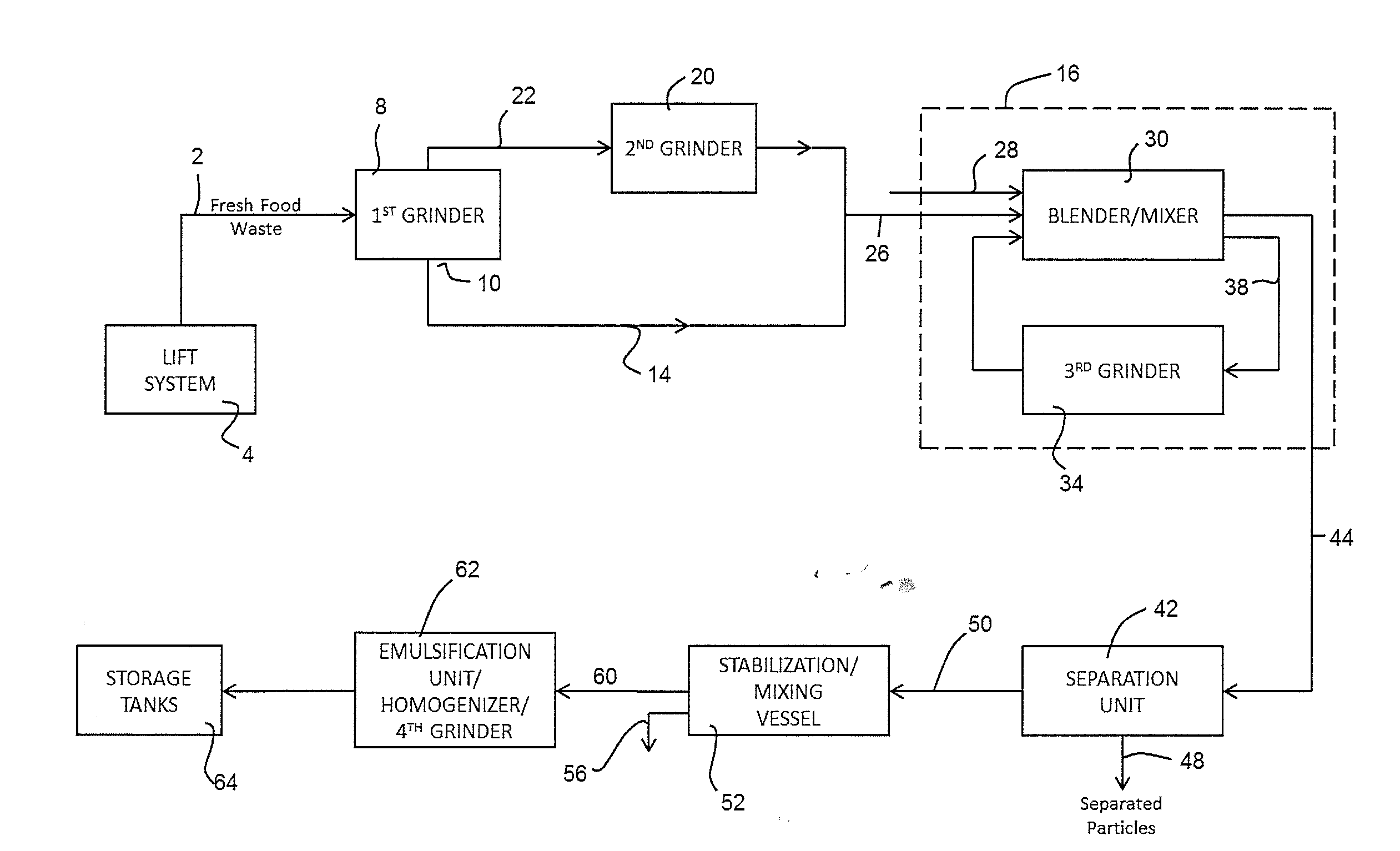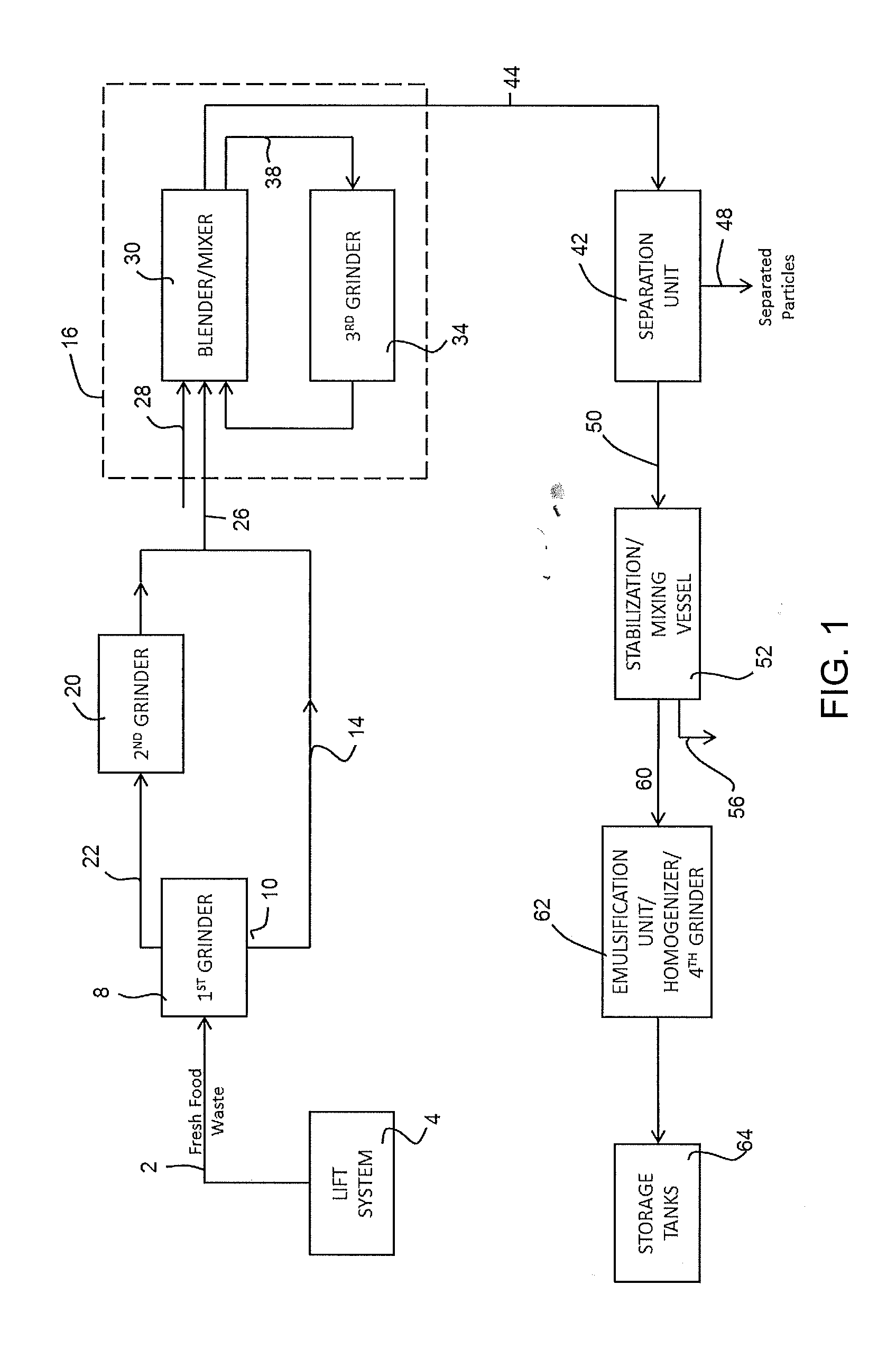Nutrient rich compositions
a composition and nutrient technology, applied in the field of nutrient rich compositions, can solve the problems of large source of greenhouse gas emissions, difficult, if not impossible, to make valuable use of recycled food waste, etc., and achieve the effects of increasing crop yield, reducing the amount of nitrate fertilizer, and increasing crop yield
- Summary
- Abstract
- Description
- Claims
- Application Information
AI Technical Summary
Benefits of technology
Problems solved by technology
Method used
Image
Examples
example 1
Increasing Yield of Produce
[0194]As an exemplary example of the increase produce yield increase obtained by application of the compositions of this invention, the effect of treating strawberry plants with (1) grower's standard fertilizer (a nitrate fertilizer and other commonly used fertilizers) was compared to treatment with (2) an emulsified hydrolysate of this invention (H2H) at 73 gallons per acre (gpa); and (3) a 50:50 blend of H2H and growers standard fertilizer, together with foliar application of calcium. 18 plots totaling 1.2 acres, within three strawberry fields were designated for one of the three treatments (6 replications per treatment), as shown in FIG. 2. Stock solution of the emulsified hydrolysate is diluted 10:1 before application to crop.
[0195]Treatments were applied by drip line irrigation on March 28, April 9, and April 18. Strawberries were harvested on April 4, 8, 11, 15, 18, 22, 25, and 29. The yield response for culled fruit is shown in FIG. 3.
[0196]FIG. 3 s...
example 2
Increasing Yield of Produce and Effect on Plant and Root Growth
[0201]A nursery trial of strawberries grown in the fall was conducted to study the effect of treatment with Growers Standard (GS) compared to treatment with H2H and a 50:50 mix of H2H:GS on yield, and plant and root growth. Portola strawberry plants were transplanted from winter storage to 8″ pots on Jul. 15, 2013. The plants were treated at planting (Aug. 13, 2013) and every two to three weeks starting on Aug. 12, 2013. The plants were also treated on 8 / 12, 8 / 26, 9 / 12, 9 / 30 and Oct. 14, 2013.
[0202]Destructive sampling of three to four plants for each treatment was completed on Sep. 7, 2013 to look at root development and to measure mass increase. The weights obtained are shown in Table 2.
TABLE 2Whole Plant Root Weight Shoot Weight TreatmentWeight (grams)(grams)(grams)Growers Standard81 g29 g52 gH2H Full Rate78 g35 g43 gH2H:GS 50:50101 g 47 g54 g
[0203]This indicates that treatment with H2H or H2H:GS appeared to increase ...
example 3
Increasing Yield of Produce
[0208]A field trial of proprietary strawberries grown in the fall was conducted to study the effect on yield of treatment with Growers Standard (GS) compared to treatment with proprietary strawberry plants that were transplanted from winter storage on Jul. 17, 2013. The plants were treated with Growers Standard practices with the exception that part of the field received five applications of 10 gallons per acre of H2H per application. The plants were also treated on 8 / 28, 9 / 18, 10 / 2, 10 / 16 and Oct. 30, 2013.
[0209]Six replicates of 4 plants each were harvested twice a week, for nine weeks (18 pick days). FIG. 14 shows a graph of the cumulative production (number of trays of strawberries obtained per acre vs. time), in a field trial of the effect of treatment with Growers Standard (GS) compared to treatment with H2H on proprietary strawberries grown in the fall. This illustrates that the cumulative net production obtained with treatment of an emulsified hydr...
PUM
 Login to View More
Login to View More Abstract
Description
Claims
Application Information
 Login to View More
Login to View More - R&D
- Intellectual Property
- Life Sciences
- Materials
- Tech Scout
- Unparalleled Data Quality
- Higher Quality Content
- 60% Fewer Hallucinations
Browse by: Latest US Patents, China's latest patents, Technical Efficacy Thesaurus, Application Domain, Technology Topic, Popular Technical Reports.
© 2025 PatSnap. All rights reserved.Legal|Privacy policy|Modern Slavery Act Transparency Statement|Sitemap|About US| Contact US: help@patsnap.com



